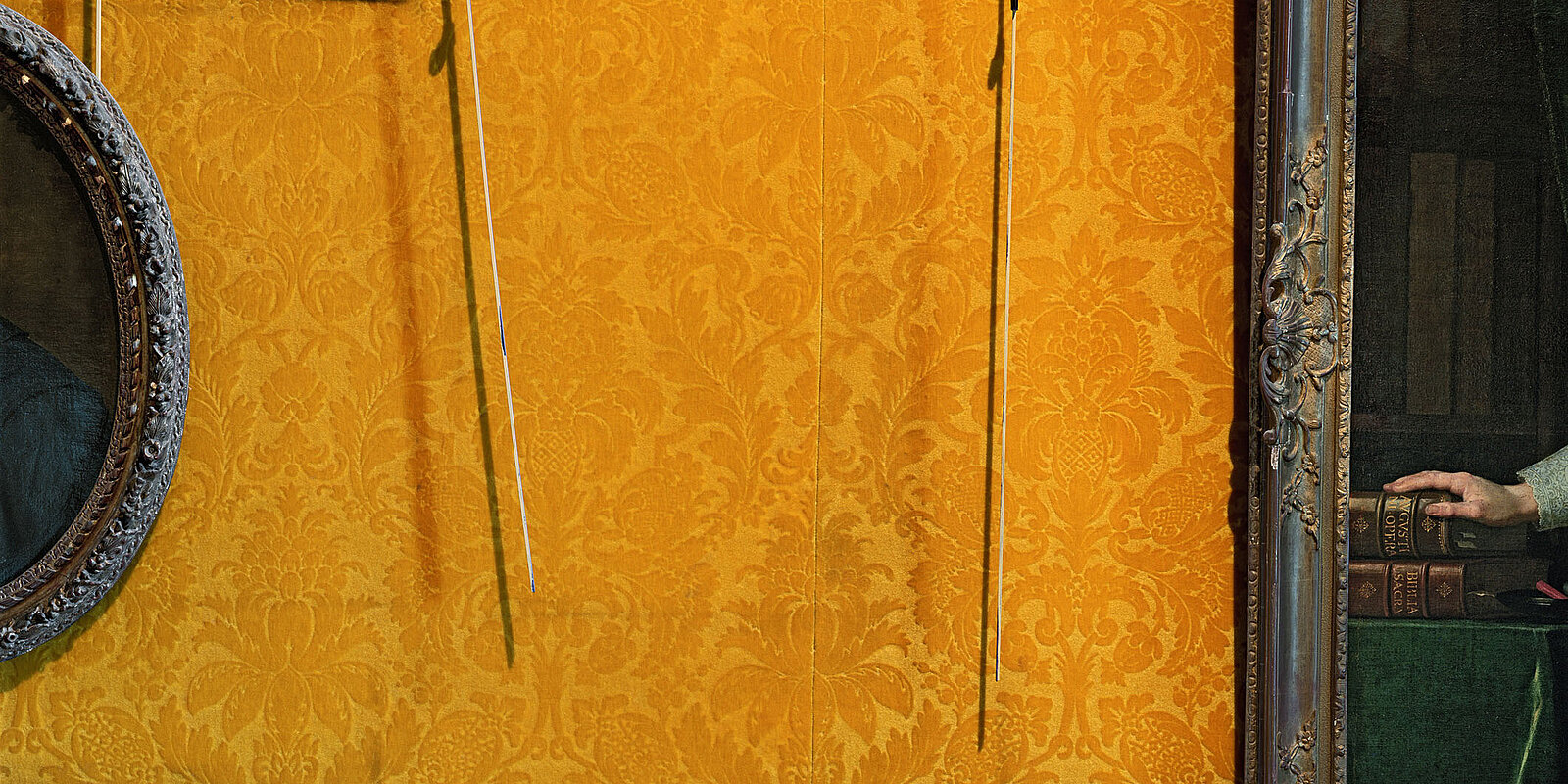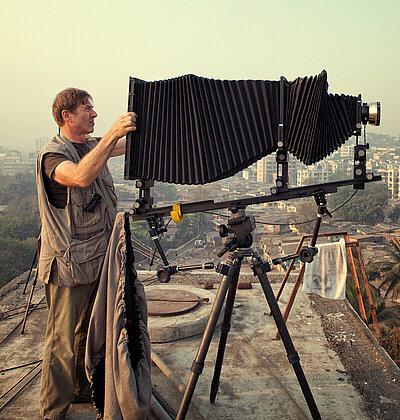Robert Polidori: PRÉSENCES

Galerie Karsten Greve Paris - Côté cour
Tuesday - Saturday: 10am - 7pm
Opening
on Saturday, April 12, 2025, from 5pm to 9pm
Galerie Karsten Greve is pleased to unveil Présences, a solo exhibition by Canadian photographer Robert Polidori. The exhibition is centered around a selection of photographs taken in Versailles, Pripyat, Beirut, and New Orleans.
An artist of time, Robert Polidori brings architecture and memory into resonance, leading the observer through the labyrinths of History. His imposing photographs are taken using a large-format camera, with long exposure time and carefully studied perspective. They capture the shimmering of fabrics, the patina of walls and the depth of colour with remarkable clarity. The photographs envelop the viewer, who is drawn into striking details, as if caught in an open window onto a bygone era.
Starting in the early 1980s and over the course of more than thirty years, Robert Polidori documented the extensive restoration work at Versailles.
Blending reportage with contemplation, his photographs bear witness to the restoration process, highlighting architectural details, materials, and colors while offering an intimate vision of the château.
The artist does not merely capture the grandeur of the site; he also explores its aging process, balancing historical splendor with the reality of conservation.
In 2001, Polidori ventured to Pripyat, Ukraine. Built in the 1970s to house workers from the Chernobyl nuclear power station, Pripyat became a ghost town after the April 1986 disaster. Polidori’s photographs depict absence and emptiness, revealing lives brutally interrupted—like a classroom where a few rusted chairs remain. The sharp detail, the contrast between the soft light and the devastation of the scene, creates an eerie, almost unreal atmosphere.
Continuing his exploration of abandonment, in 2005, he documented the aftermath of Hurricane Katrina in New Orleans. Arriving impulsively right after the disaster, Polidori bore witness to a scene of utter desolation, capturing it in poignant images. Every interior seems to echo with the presence of its former inhabitants: a row of utensils hovers over a shattered kitchen, an impassive crucifix watches over the chaos of a destroyed bedroom.
This architectural poetry is further illustrated in his photographs from the 2010s, when he captured Beirut’s Hotel Petra.
Once a grand palace, it was devastated during the Lebanese Civil War (1975–1990). Promised restoration never came, and the symbol of pre-war Beirut fell into oblivion.
Polidori was astonished to discover a rare example of “intact decomposition.” Struck by the beauty of the worn walls, which evoked contemporary paintings, he created a series of images that elevate the melancholic grandeur of abandoned places.
Through Polidori’s lens, ruins become timeless works of art, where splendor emerges from decay. His masterful use of light and textures reveals unexpected beauty, and here and there a decrepit wall becomes as majestic as a royal tapestry.
Robert Polidori explains that his discovery of The Art of Memory by Frances Yates profoundly influenced his thinking. The book traces the history of mnemonic methods from ancient Greece to the early 17th century.
Polidori confides that he always thought that the main function of the camera was to serve history, as a tool. But in The Art of Memory, he discovered the principle of the method of loci, or method of places. This technique, which dates back to Antiquity and was popularised by Greek and Roman orators, is based on the association of information to be remembered with well-known places. By linking the data to a spatial structure, it is easier for the human brain to retrieve.
This idea that recall is deeply tied to places resonates throughout Polidori’s work. Focused on spaces and their ability to tell stories even in the absence of people, his interiors, bridging past and present, seem like frozen temples of human memory.
Born in Montreal in 1951, Robert Polidori is a Canadian photographer based in California, known for his large scale images of urban environments and empty interiors, exploring their relationship with time, reminiscence and decay. He views the spaces he photographs as “theaters of memory,” where presence has vanished, leaving only structures that could disappear forever at any moment. In the 1970s, he moved to New York, working at Anthology Film Archives under Jonas Mekas. He graduated from the State University of New York in 1980. In 1998, he won the World Press Award for his reportage on the construction of the Getty Museum, followed by the Alfred Eisenstaedt
Award in 1999 and 2000 for his work published in The New Yorker. In 2007 and 2008, he received the Communication Arts Award. More recently, in 2022, he was awarded the Guggenheim Fellowship for photography. His works are included in numerous prestigious collections, including those of the Los Angeles County Museum of Art (Los Angeles), the Metropolitan Museum of Art and the Museum of Modern Art (New York), the Victoria and Albert Museum (London), and the Bibliothèque nationale de France (Paris).
